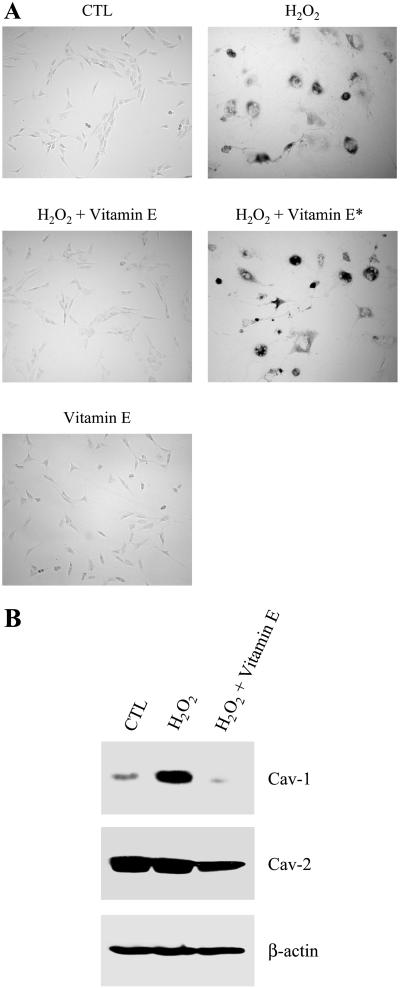Figure 6.
Quercetin's effects can be replicated by the antioxidant vitamin E. (A) β-galactosidase activity. NIH 3T3 cells were left untreated (CTL), treated with 150 μM H2O2 alone (H2O2) or in combination with 300 μM vitamin E (H2O2 + vitamin E), or treated with 300 μM vitamin E alone (vitamin E) for 2 h and the cells were allowed to recover for 11 d. Cells were then subjected to an acid β-galactosidase activity assay. In addition, NIH 3T3 cells were treated with 150 μM H2O2 alone for 2 h, recovered for 11 d, and then incubated with 300 μM vitamin E for 2 h before assaying for acid β-galactosidase activity (H2O2 + vitamin E*). Cells were photographed using a BX50WI Optical light microscope (Olympus) at a magnification of ×10. Interestingly, vitamin E completely prevented the induction of senescence-associated β-galactosidase activity in H2O2-treated cells. As a control, treatment with vitamin E alone did not stimulate acid β-galactosidase activity. (B) Immunoblotting. Cells were treated as in A. Cell lysates were then prepared and subjected to SDS-PAGE/Western-blot analysis with anti-caveolin-1 and anti-caveolin-2 mAb probes. Interestingly, the antioxidant vitamin E abolished the up-regulation of caveolin-1 protein expression induced by H2O2. Caveolin-2 protein expression was not significantly affected by the treatment with H2O2 alone and was slightly reduced, similar to caveolin-1, by the treatment of H2O2 in combination with vitamin E. Immunoblotting with anti-β-actin shows equal protein loading.

